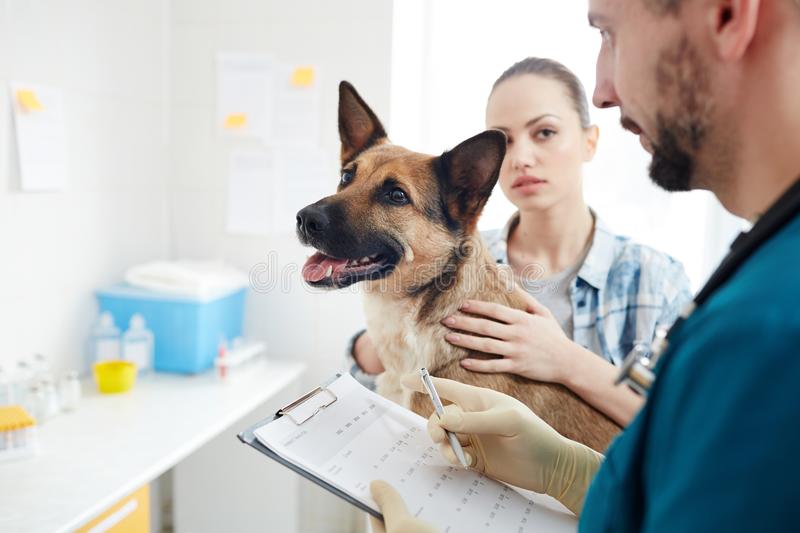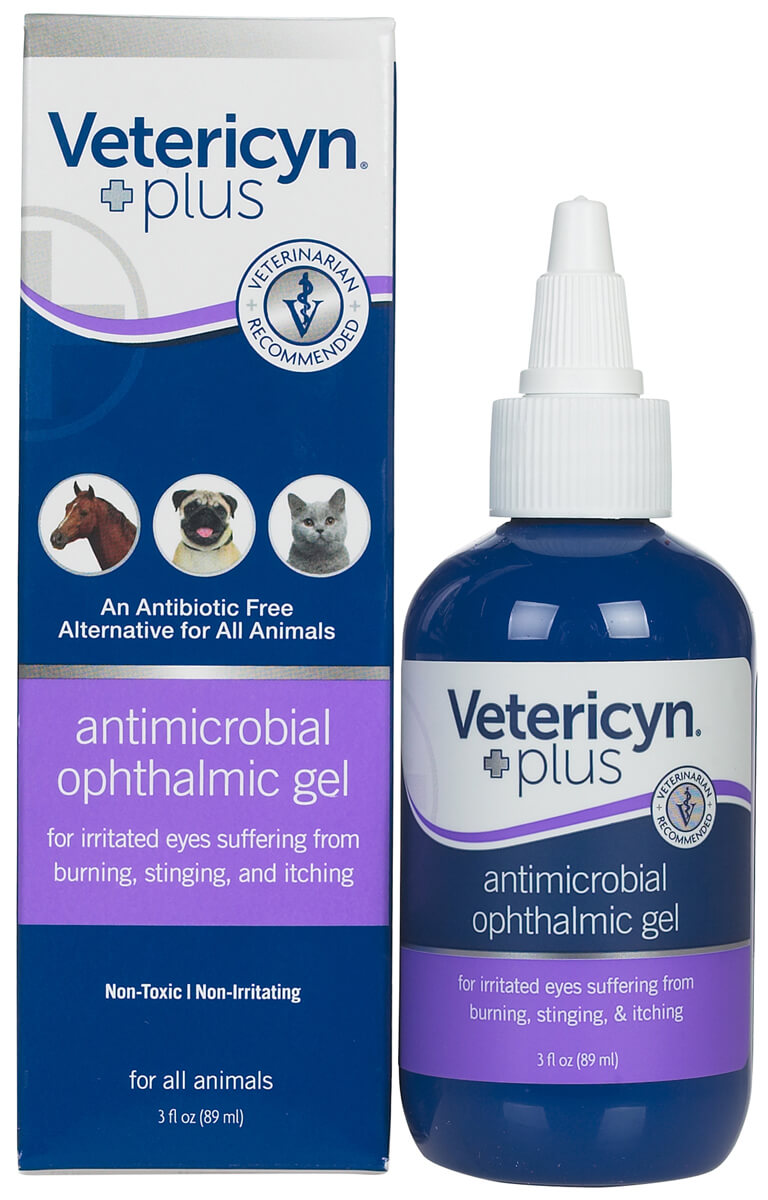Eye infections in dogs can be caused by a variety of factors, including bacteria, viruses, allergens, and foreign objects. These infections can be painful and uncomfortable for your furry friend, and if left untreated, can lead to more serious issues such as vision loss or scarring of the cornea. That’s why it’s important to seek treatment as soon as possible if you suspect that your dog has an eye infection.
Terramycin is a brand of eye ointment that contains the active ingredient oxytetracycline, a type of antibiotic. It is used to treat bacterial infections of the eye in dogs and other animals. Eye infections in dogs can be caused by a variety of factors, including allergies, foreign objects in the eye, and injury. Left untreated, these infections can lead to more serious problems, such as corneal ulcers and vision loss. Therefore, it is important to seek treatment for eye infections in dogs as soon as possible.
How does Terramycin work?

Oxytetracycline, the active ingredient in Terramycin, works by inhibiting the growth of bacteria. It does this by interfering with the bacteria’s ability to produce proteins, which are necessary for the bacteria to survive and multiply. As a result, the infection is reduced, and the eye has a chance to heal.
How is Terramycin administered?

To apply Terramycin eye ointment, wash your hands thoroughly to prevent the spread of infection.
Terramycin is available in the form of an eye ointment, which is applied directly to the eye. The ointment is squeezed out of a tube and applied to the inner corner of the eye, where it spreads across the surface of the eye. It is important to follow your veterinarian’s instructions when using this medication, as the recommended dose and frequency of application will depend on the severity of the infection and the size of the dog.
It is important to keep the ointment clean and to avoid contaminating the tip of the tube by not allowing it to touch the eye or any other surface. Be sure to wash your hands before and after applying the ointment to help prevent the spread of infection. Be sure to use Terramycin only in the eye and to avoid ingesting or applying it to other parts of the body. If you notice any unusual side effects or if the infection does not improve within a few days of starting treatment, you should contact your veterinarian for further evaluation and guidance.
What are the Possible Side effects of Terramycin?

Like any medication, Terramycin can cause side effects in some dogs. The most common side effects include redness, swelling, and irritation of the eye. These side effects are usually mild and resolve on their own within a few days of starting treatment. If the side effects are severe or if they persist, you should contact your veterinarian for further evaluation and guidance.
Other less common side effects of Terramycin include:
- Allergic reactions: Some dogs may have an allergic reaction to oxytetracycline or other ingredients in the ointment. Symptoms of an allergic reaction may include redness, swelling, and itching of the eye, as well as difficulty breathing and hives. If you suspect your dog is having an allergic reaction, you should contact your veterinarian immediately.
- Toxicity: In rare cases, dogs may experience toxicity from oxytetracycline. Symptoms of toxicity may include vomiting, diarrhea, and loss of appetite. If you notice any of these symptoms, you should contact your veterinarian immediately.
- Resistance: As with any antibiotic, there is a risk of bacteria becoming resistant to oxytetracycline over time. This means that the bacteria may not be killed by the medication, and the infection may continue to persist. To help prevent the development of antibiotic resistance, it is important to follow your veterinarian’s instructions and to complete the entire course of treatment as prescribed.
What Should I do if I Miss a Dose of Terramycin?
If you forget to give your dog a dose of Terramycin, you should give it as soon as you remember. However, if it is almost time for the next dose, you should skip the missed dose and resume the regular dosing schedule. Do not give your dog two doses of Terramycin at the same time to make up for a missed dose. If you are unsure what to do, you should not hesitate your Veterinarian for advice.
Eye infections in Dogs
Eye infections in dogs can be a common and unpleasant experience for both pet and owner. These infections can be caused by a variety of factors, including bacteria, viruses, allergens, and foreign objects, and can lead to symptoms such as redness, swelling, discharge, and pain. If left untreated, eye infections can lead to more serious issues such as vision loss or scarring of the cornea.
Types of Eye Infections that Affect Dogs
There are several different types of eye infections that can affect dogs, including:
- Bacterial infections: These infections are caused by bacteria and can be treated with antibiotics such as Terramycin eye ointment.
- Viral infections: These infections are caused by viruses and may require antiviral medication to treat.
- Allergic conjunctivitis: This type of infection is caused by an allergic reaction to substances such as pollen or dust. Allergic conjunctivitis can be treated with antihistamines or other allergy medications.
- Foreign body infections: These infections occur when a foreign object, such as a grass seed or piece of dirt, gets stuck in the eye. Foreign body infections may require removal of the object and antibiotics to treat the infection.
Diagnosing and Treating Eye Infections in Dogs
To diagnose an eye infection in your dog, your veterinarian will perform a physical examination and may also take a sample of the discharge for laboratory testing. They will also consider any other potential underlying causes, such as allergies or trauma, and may recommend additional tests or treatments accordingly.
Treatment of eye infections in dogs will depend on the specific cause and severity of the infection. In general, treatment may include medications such as antibiotics or antivirals, as well as supportive care such as cleaning the area around the eye and providing pain relief.
Symptoms of Eye Infections in Dogs
Eye infections in dogs can cause a variety of symptoms, including:
- Redness and swelling of the eye or eyelid
- Discharge from the eye, which may be clear, yellow, or green
- Pain or sensitivity to light
- Squinting or rubbing at the eye
- Cloudiness or changes in the appearance of the eye
- Changes in appetite or behavior
If you notice any of these symptoms in your dog, it’s important to consult with a veterinarian as soon as possible. Left untreated, eye infections can lead to more serious issues such as vision loss or scarring of the cornea.
In addition to the above symptoms, it’s important to be on the lookout for any other changes in your dog’s eye health or behavior. If you notice any unusual discharge, swelling, or changes in your dog’s appetite or behavior, it’s a good idea to consult with your veterinarian for further evaluation and guidance.
Your veterinarian will perform a physical examination and may also take a sample of the discharge for laboratory testing to determine the cause of the eye infection and the appropriate course of treatment. They will also consider any other potential underlying causes, such as allergies or trauma, and may recommend additional tests or treatments accordingly.
By being aware of the symptoms of eye infections in dogs and seeking treatment as soon as possible, you can help your furry friend feel more comfortable and avoid further complications.
Other Tips to Manage your Dogs Eye Infection
In addition to using Terramycin, there are a few other things you can do to help manage your dog’s eye infection and prevent further complications:
- Keep the area around your dog’s eyes clean by gently wiping away any discharge with a clean, damp cloth.
- Avoid allowing your dog to rub or scratch their eyes, as this can cause further irritation and damage.
- Keep your dog away from irritants such as smoke, dust, and pollen, which can worsen the infection.
- Avoid sharing towels or other household items with your dog, as this can spread the infection to other pets or people.
Overall, Terramycin eye ointment is a useful medication for treating bacterial eye infections in dogs. It’s important to use it as directed and to consult with a veterinarian if you have any concerns. By following your veterinarian’s instructions and taking care to keep your dog’s eyes clean and protected, you can help your furry friend feel more comfortable and avoid further complications.
Always consult your Vet

It’s important to follow your veterinarian’s instructions for treatment and to complete the entire course of medication as prescribed, even if the symptoms seem to have improved. In addition, there are a few things you can do at home to help manage your dog’s eye infection and prevent further complications:
- Keep the area around your dog’s eyes clean by gently wiping away any discharge with a clean, damp cloth.
- Avoid allowing your dog to rub or scratch their eyes, as this can cause further irritation and damage.
- Keep your dog away from irritants such as smoke, dust, and pollen, which can worsen the infection.
- Avoid sharing towels or other household items with your dog, as this can spread the infection to other pets or people.
To prevent eye infections in your dog, it’s important to practice good hygiene and to keep the area around your dog’s eyes clean. It’s also a good idea to keep an eye out for any unusual discharge or changes in your dog’s eye health, and to consult with your veterinarian if you have any concerns. By taking these precautions, you can help keep your dog’s eyes healthy and avoid the discomfort and potential complications of eye infections.
 Total Pooch Dog Supplements, Tear Stain Removers, De-wormers, Tylosin for Dogs and other great products.
Total Pooch Dog Supplements, Tear Stain Removers, De-wormers, Tylosin for Dogs and other great products.



